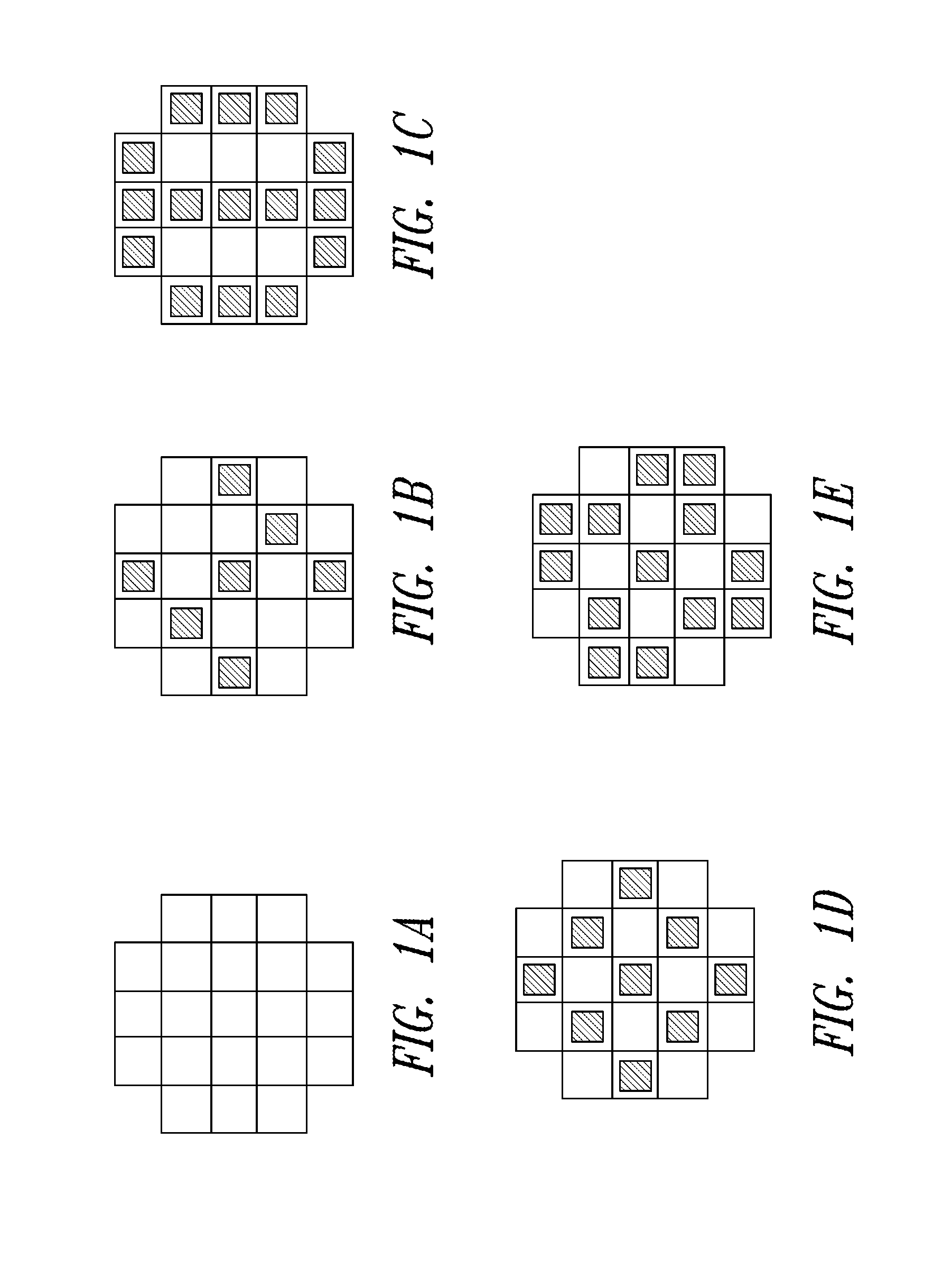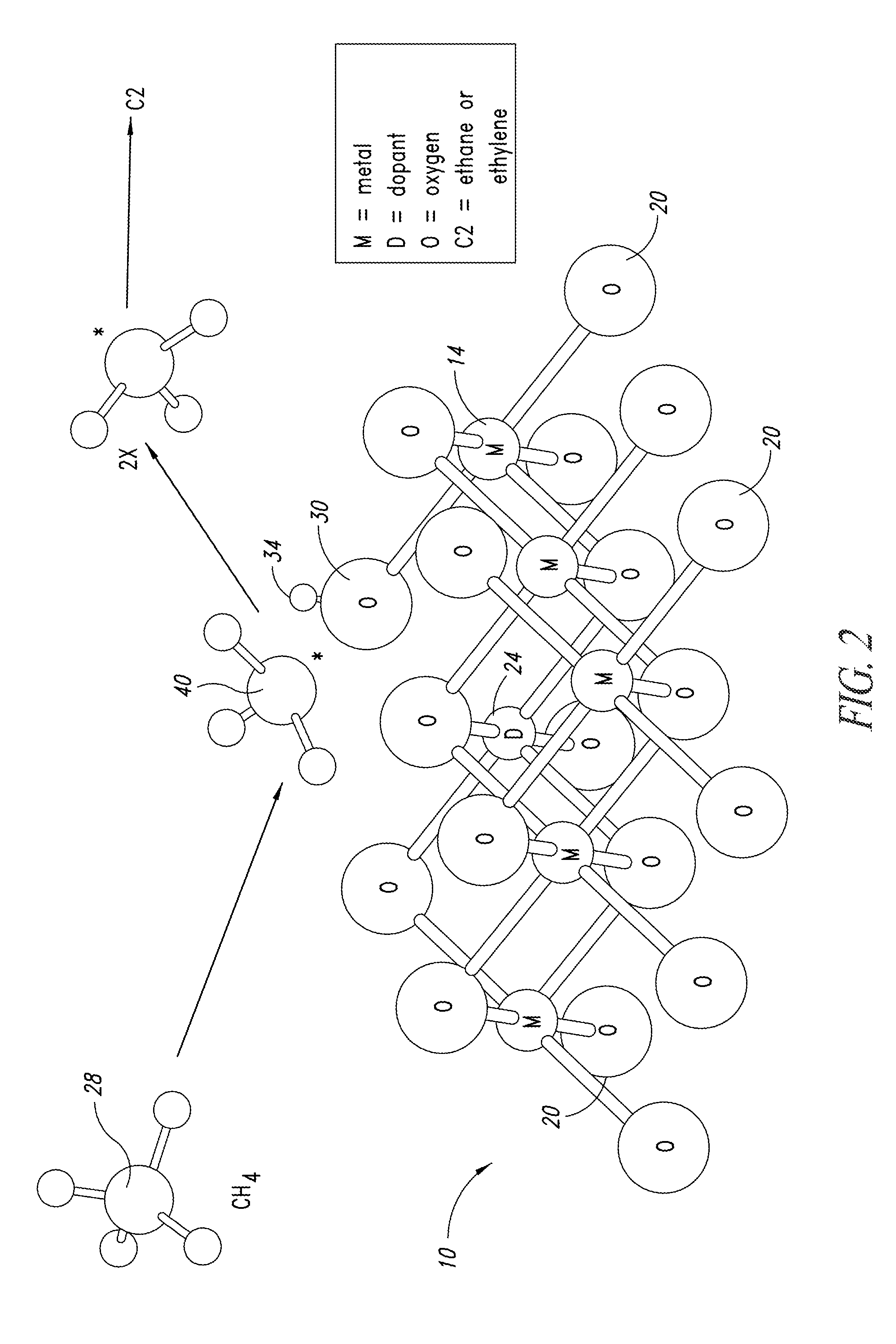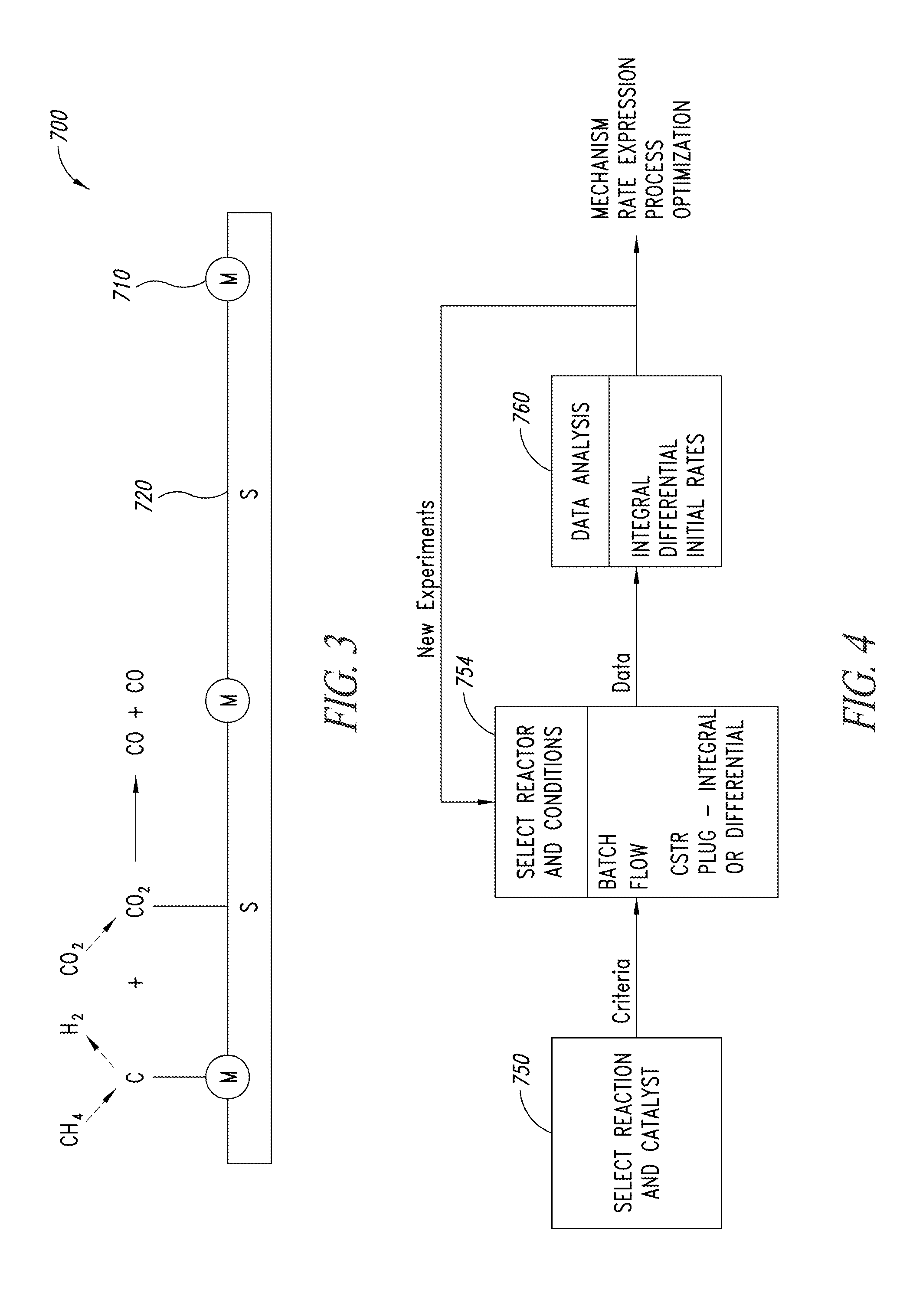Catalytic forms and formulations
a catalytic and form technology, applied in the field of catalytic forms and formulations, can solve the problems of reducing the yield of undesired side products, affecting the reaction rate, and often limiting the adsorption rate of reactants,
- Summary
- Abstract
- Description
- Claims
- Application Information
AI Technical Summary
Benefits of technology
Problems solved by technology
Method used
Image
Examples
example 1
Preparation of Supported MnWO4 Nanowire Catalysts
[0414]Supported MnWO4 nanowire catalysts are prepared using the following general protocol. MnWO4 nanowires are prepared using the method described in U.S. Pub. No. 2012 / 0041246. Manganese tungstate nanowires, support, and water are slurried for 6 h at room temperature. The manganese tungstate to support ratio ranges from 2-10 wt %. The mixture is dried in a 65° C. oven and then calcined in a muffle oven in air: load in the furnace at room temperature, ramp to 400° C. with 5° C. / min rate, dwell for 2 h, ramp to 850° C. with 5° C. / min rate, dwell for 8 h, cool to room temperature. The following is a list of exemplary supports that may be used: SiO2, Al2O3, SiO2—Al2O3, ZrO2, TiO2, HfO2, Silica-Aluminum Phosphate, and Aluminum Phosphate.
example 2
Preparation of Catalytic Material Comprising Cordierite Honeycomb Ceramic Supported Nd2O3 Nanowires
[0415]Nd2O3 nanowires are prepared using the methods described in U.S. Pub. No. 2012 / 0041246.
[0416]A 400 mg aliquot of Nd2O3 nanowires is mixed with 2 g of DI water and placed into a 5 ml glass vial containing 2 mm Yttria Stabilized Zirconia milling balls. The vial is placed on a shaker at 2000 RPM and agitated for 30 minutes. A thick slurry is obtained.
[0417]A ⅜ inch diameter core is cut along the channel direction into a 400 CPSI (channel per square inch) cordierite honeycomb monolith and cut in length so the core volume is approximately 1 ml.
[0418]The core is placed into a ⅜ inch tube, and the catalyst slurry is fed on top of the ceramic core and pushed with compressed air through the monolith channel. The excess slurry is captured into a 20 ml vial. The coated core is removed from the ⅜ inch tube and placed into a drying oven at 200° C. for 1 hour.
[0419]The coating step is repeated...
example 3
Preparation of Catalytic Material Comprising Silicon Carbide Ceramic Foam Supported Nd2O3 Nanowires
[0420]Nd2O3 nanowires were prepared using the methods described in U.S. Pub. No. 2012 / 0041246.
[0421]A 400 mg aliquot of Nd2O3 nanowires is mixed with 2 g of DI water and placed into a 5 ml glass vial containing 2 mm Yttria Stabilized Zirconia milling balls. The vial is placed on a shaker at 2000 RPM and agitated for 30 minutes. A thick slurry is obtained.
[0422]A ⅜ inch diameter core is cut from a 65 PPI (Pore Per Inch) SiC foam and cut in length so the core volume is approximately 1 ml.
[0423]The core is placed into a ⅜ inch tube and the catalyst slurry is fed on top of the ceramic core and pushed with compressed air through the monolith channel. The excess slurry is captured into a 20 ml vial. The coated core is removed from the ⅜ inch tube and placed into a drying oven at 200° C. for 1 hour.
[0424]The coating step is repeated two more times with the remaining slurry followed by drying ...
PUM
| Property | Measurement | Unit |
|---|---|---|
| temperatures | aaaaa | aaaaa |
| porosity | aaaaa | aaaaa |
| porosity | aaaaa | aaaaa |
Abstract
Description
Claims
Application Information
 Login to View More
Login to View More - R&D
- Intellectual Property
- Life Sciences
- Materials
- Tech Scout
- Unparalleled Data Quality
- Higher Quality Content
- 60% Fewer Hallucinations
Browse by: Latest US Patents, China's latest patents, Technical Efficacy Thesaurus, Application Domain, Technology Topic, Popular Technical Reports.
© 2025 PatSnap. All rights reserved.Legal|Privacy policy|Modern Slavery Act Transparency Statement|Sitemap|About US| Contact US: help@patsnap.com



